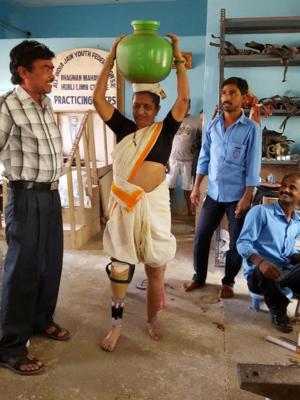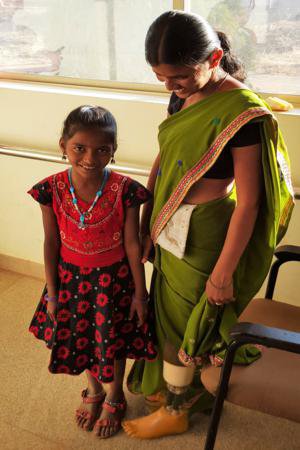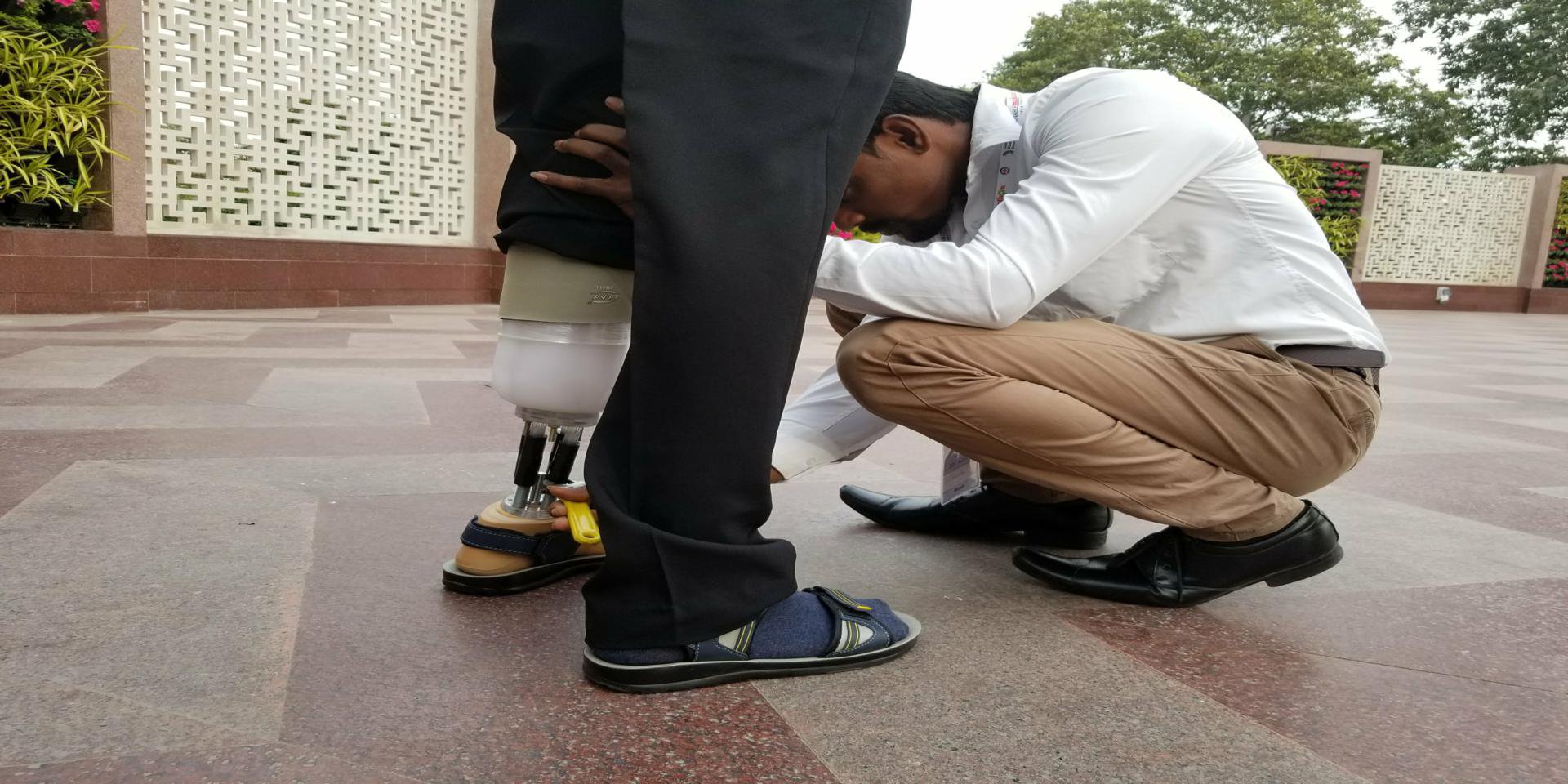 Erin Keaney sits crouched on a dirt floor in Hubli, India, her eyes fixed on the patient standing in front of her. The patient – a woman wearing a prosthetic on her right leg – expertly lifts a green vase brimming with water atop her head as she used to do every day to bring water to her household. She takes a step. And then another. And then another. Erin watches closely, looking for any imperfections in the patient’s stride or unwanted movements in the prosthetic she designed. We’ve seen so many patients start jumping around within the first few minutes of being fit with our prosthetic,” said Erin. “Watching our patients move around freely and comfortably for the first time in years evokes a feeling I’ll never get tired of.”
Erin Keaney sits crouched on a dirt floor in Hubli, India, her eyes fixed on the patient standing in front of her. The patient – a woman wearing a prosthetic on her right leg – expertly lifts a green vase brimming with water atop her head as she used to do every day to bring water to her household. She takes a step. And then another. And then another. Erin watches closely, looking for any imperfections in the patient’s stride or unwanted movements in the prosthetic she designed. We’ve seen so many patients start jumping around within the first few minutes of being fit with our prosthetic,” said Erin. “Watching our patients move around freely and comfortably for the first time in years evokes a feeling I’ll never get tired of.”
Erin is the COO and co-founder of Nonspec, a company that develops adjustable, affordable and durable prosthetic limbs for amputees worldwide. The limbs are mass produced using plastic parts that allow them to easily adjust for day-to-day comfort or grow along with a patient, allowing children and growing patients to need to change their prosthetic fewer times throughout their lives. It was no coincidence that Erin – who has her BS, MS, and PhD in Plastics Engineering from UMASS Lowell – used plastic when developing these devices.
“Using plastic parts allows for greater flexibility within our product,” said Erin. “Plastic makes our device ultra-lightweight compared to alternatives and the give within the material puts an extra spring in an amputee’s step.” “The idea for Nonspec came about during her senior year at UMASS when she collaborated with her co-founder Johnathan de Alderete – a mechanical engineer with a MS in business and PhD in biomedical engineering – to develop the adjustable limbs. Erin learned there were approximately 54 million amputees worldwide with three million more amputations being carried out each year. And although prosthetics were already available, their fabrication and fitting can run as much as $20,000, making them unavailable to many amputees – especially those in developing countries.
“The idea for Nonspec came about during her senior year at UMASS when she collaborated with her co-founder Johnathan de Alderete – a mechanical engineer with a MS in business and PhD in biomedical engineering – to develop the adjustable limbs. Erin learned there were approximately 54 million amputees worldwide with three million more amputations being carried out each year. And although prosthetics were already available, their fabrication and fitting can run as much as $20,000, making them unavailable to many amputees – especially those in developing countries.
“It was during our first trip to India that we really got a glimpse of the scope of the problem,” said Erin. “The clinic in a small town was overflowing with patients who needed access to a prosthetic or were feeling discomfort with their current device and needed to make small adjustments. It was then that we realized we had a solution that could truly make a difference.”
The Nonspec model allows greater access to amputees that otherwise wouldn’t be able to afford a prosthetic. The mass production of plastic parts have allowed for a price point of $250 – a far cry from the $20,000 other prosthetics can cost – and patients are able to make day-to-day adjustments for comfort without a costly trip to the clinic. To date, Nonspec has connected with 100 Indian hospitals. Twenty people in the country are walking again with their Nonspec prosthetic limb, with another 25 scheduled to be fit by the end of 2018. “One of our patients was able to return to her job as a nurse and a 15-year-old girl who lost her leg to cancer is ruling the badminton courts again,” said Erin. “Seeing the impact my product makes on a person’s quality of life keeps me going and inspired to further Nonspec’s reach.”
In 2019, Erin did just that, expanding Nonspec’s operations to China and Rwanda – where the team had already trained all 12 prosthetic clinics to fit its prosthetic devices to patients in need. During March 2020, Erin’s team was able to injection mold parts for face shields and donate hundreds of them to local healthcare facilities. They also made the design open source, contributing to thousands of global donations.
